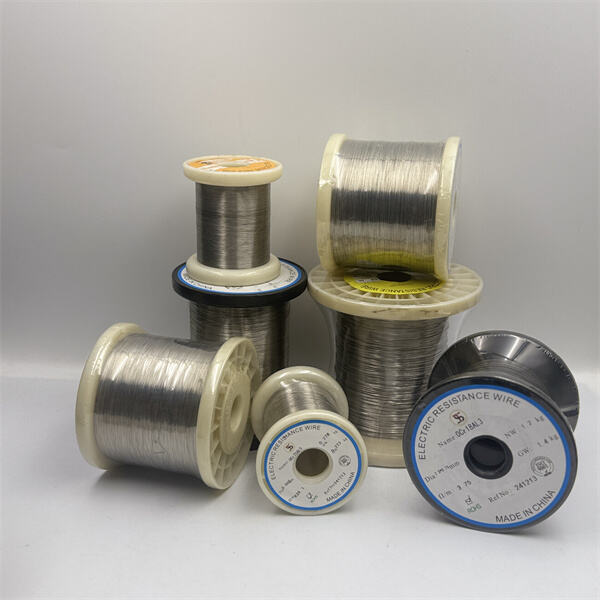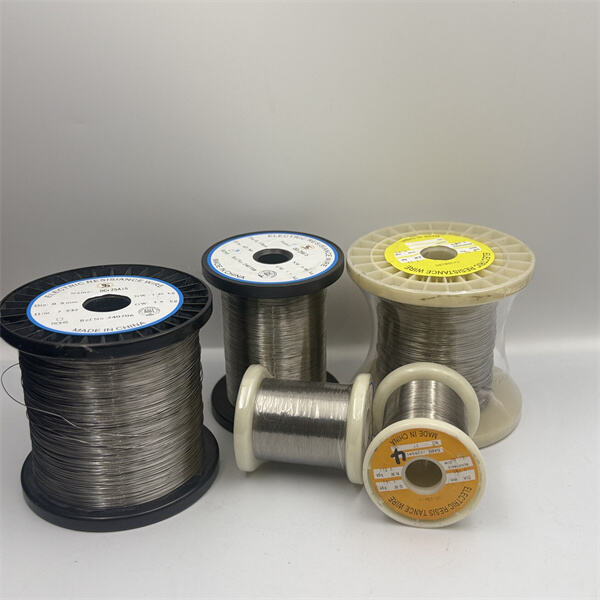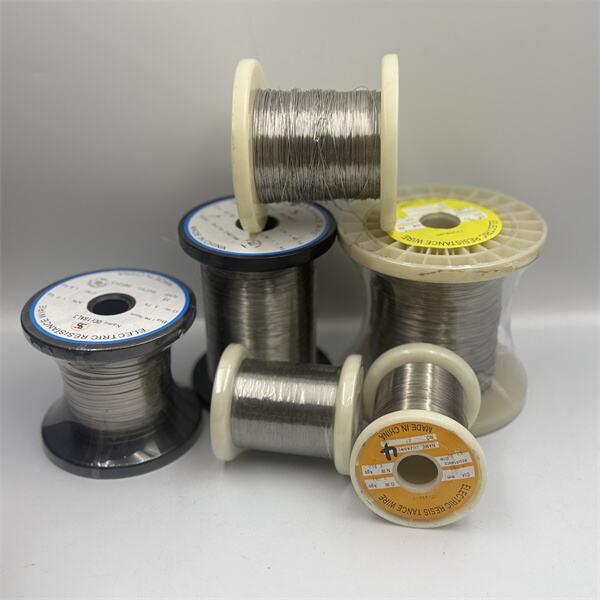Make wires connecting the world.
Resistance in a Wire: Resistance is an important concept for understanding how electricity flows and the function of electrical systems. When we say a wire has resistance, we mean that it hinders the flow of electricity through it. When electricity is trying to flow in a wire, it disregards impedance, —we always have resistance, which slows things down. This is important for anyone learning about electricity and how it works in our daily lives.
A wire's resistance can depend on 3 major factors: temperature, length, and the material it is made from. All of these factors weigh heavily in the TS Heating Alloy Resistance Wire will have. An example of this is a wire that is constructed out of the material that does not conduct electricity well will exhibit higher resistance. Similarly, if the wire is longer, then its resistance will be greater than that of a shorter wire. In addition, if the wire is hotter, it will show more resistance than when it is cooler.
The resistance of a wire increases quite a bit when it gets hot. What happens is that the very small building blocks of matter called atoms inside the wire jostle around much more when heated. When particles vibrate and move, it is harder for electricity to go through the wire. So, when current passes through a hot wire, it has to get through more resistance, which might either slow down the flow or influence how well some things work.
Resistance has also a very importance aspect in Wires which are the length of the wire. The TS Heating Alloy wire wound resistance vary with the larger wiring & become smaller with small wiring. "When a wire is longer, there is more 'stuff' in the way of the electricity, and therefore more things for the electricity to resist," Now imagine that your journey is even longer, it's going to cost you more energy and time than a journey of a shorter distance. Just as electricity has more friction when it moves through a longer wire, it also has more resistance.

The resistance of a wire can vary according to the materials used. Some materials, such as copper, allow electrons to flow very easily with a low resistance. And this is the reason copper is used most often in electrical wiring. In contrast, different materials such as nichrome, do not allow electricity to flow through them easily and thus have high resistance. Nichrome is largely used in heating elements for it produces heat when electrical current passes through the material. It is one of the most influencing factors that result in the production of resistance values in a given wire.

The efficiency an electric system gives can be adversely affected by what resistance is present within a wire. With high resistance, if you force current through the wire, more energy is wasted into heat than into useful work. This can particularly be very visible in systems making use of heating elements-toasters and electric heaters. If there is little resistance at a heating element, it might waste much energy in the form of heat energy and make the system inefficient. But understanding and controlling resistance is also very important for making electrical systems more effective.

Well, we can do a few things in a practical way in order to attempt to decrease resistance in a wire. One good approach is the use of a thicker wire. Since thicker wires are able to transport more electricity with less resistance than the thinner ones, the electricity can be allowed to travel with more ease. Another useful approach of TS Heating Alloy wire wound resistance is to use materials that allow easy flow of energy. Using copper wire instead of steel wire, for example, will reduce the overall resistance in a wire circuit significantly. These are critical for efficient electrical system creation.
TS Heating Alloy Materials Co., Ltd is equipped with cutting-edge technology, including wire drawing machines, annealing furnaces, and packing machines. This ensures that every product, from raw materials to finished items, meets stringent quality standards. The company’s production processes are designed for precision and reliability, enabling the manufacturing of high-quality resistance wires and steel wire ropes. Whether it's Fe-Cr-Al or Ni-Cr wire, our products are crafted with care and expertise, ensuring optimal performance in various industrial applications.
Since its establishment in 2023, TS Heating Alloy Materials Co., Ltd has expanded its international footprint through strong trading partnerships. Our products are now successfully exported to regions such as Japan, South Korea, Southeast Asia, Europe, and Africa, with an emphasis on fostering long-term relationships. By continuing to develop the TS Heating Alloy brand globally, we aim to increase recognition and expand our presence in international markets, offering high-performance alloy materials to customers worldwide.These four points highlight TS Heating Alloy Materials Co., Ltd's strengths, showing its commitment to quality, customer service, and global expansion.
With dozens of material types available, TS Heating Alloy Materials Co., Ltd offers a broad selection of resistance wire and steel wire rope products. This variety ensures that we meet the specific needs of diverse industries, from construction to specialized sectors requiring resistance wire ropes. Our ability to supply both standard and custom-made solutions makes us a one-stop shop for businesses worldwide, providing versatility and flexibility to cater to various market demands.
Located in Taizhou, Jiangsu, China, TS Heating Alloy Materials Co., Ltd benefits from its proximity to Shanghai Port, one of the world's busiest shipping hubs. This strategic location facilitates efficient international shipping, allowing us to offer timely delivery to markets across Asia, Europe, North America, and Africa. Our logistics capabilities ensure that we can meet global demand quickly and reliably, making us an ideal partner for companies looking for high-quality alloy wire products with fast turnaround times.